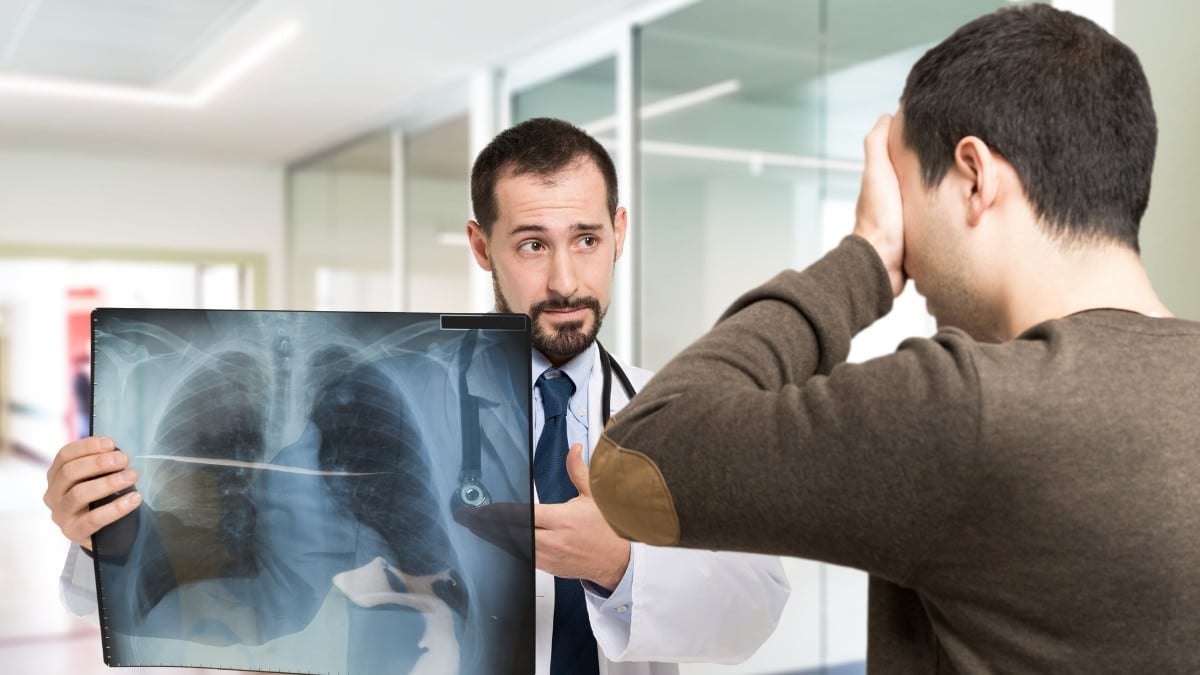Lung cancer is one of the deadliest of all cancers worldwide. It is common in both men and women, and it accounts for millions of new cases every year. It is also the most common cause of mortality, with thousands of worldwide deaths.
The lungs are one of the main organs in the body. Lungs consist of 5 lobes, 3 in the right lungs and 2 in the left lung. As an individual breathes, the lungs absorb oxygen from the air, delivered to the rest of the body through the bloodstream.
The cancer is a malignant tumor in which the cells grow uncontrollably in one or both the lungs. The cancer starts in the lung tissues or cells lining the respiratory tract’s airways that allow the air to get into the lungs.
Potent Causes of Lung Cancer
Smoking
Cigarette smoking is one of the most significant single cause of lung cancer. This is because tobacco smoke consists of thousands of chemicals, many of which are harmful.
These chemicals cause damage to the tissues, and whenever people smoke, their body has to fight to heal the damage caused by the chemicals. Over time, the injury leads to the occurrence of the disease.
When an individual inhales the smoke, the chemicals reach the lungs quickly, and from the lungs, it reaches the blood. It is the blood that spreads the substances to the other parts of the body.
This cancer consists of small cell lung cancer and non-small cell lung cancer. Cigarette smoking is the predominant risk factor for both types of lung cancer. DNA damage is one of the leading causes of cancer development, and cigarette smoke exposure leads to the accumulation of carcinogens that result in DNA damage.
Many studies have been conducted to evaluate the effect of smoking cessation on the relative risk of lung cancer. A significant reduction in the relative risk of developing lung cancer was observed in people who quit smoking cigarettes. Quitting smoking has several benefits in patients having lung cancer.
Radon gas
Radon gas is as a radioactive gas released from the decay of uranium in rock and soil. When naturally occurring uranium breaks down, it produces radon gas. It is an invisible, odorless, and tasteless gas that diffuses into the air.
To some extent, it is present in all residential homes but low concentration. It is naturally present in the soil, rocks, and building material from where it spreads with relative ease, mixing with other gases present in the atmosphere. Radon gas is also present in water.
Radon is present in nearly all air, and each of us breathes radon every day, but in low concentration. However, those who inhale a high amount of radon are at a higher risk of developing the cancer. Radon can enter homes through cracks in floors, walls, or foundations. Due to the closeness to the ground, the basement and first floor have higher radon levels than other floors.
Asbestos
Asbestos is a mineral mined in the rocks found in amosite, crocidolite, and chrysotile, used in many industries. Multiple studies suggest that exposure to asbestos dust associates with the development of various diseases, including lung cancer.
In the lungs, asbestos causes local inflammation and disrupts the orderly cell division. The severity of asbestosis depends on the total amount of asbestos to which an individual has been exposed and the length of time since exposure first began.
The fibres of asbestos can remain in the lungs for a long time. Therefore, the tumor that can occur due to asbestos fibres in the lungs continues to develop for many years, even after exposure stops.
Usually, bronchial carcinomas is the lung cancer which is a result of asbestos. Therefore, the risk of developing cancer among workers exposed to asbestos fibres and cigarette smoke is high.
According to reports, asbestos-related diseases result in thousands of deaths.
Air pollution
Over the past decades, it has been observed that outdoor air pollution is linked to the development of different types of cancer, including lung cancer. This is because the total exposure to air pollution depends indoors and outdoors.
The indoor air quality has significant health implications as people spend a lot of time indoors. Indoor air pollution can become poisonous or unhealthy.
Things that can make indoor air pollution unhealthy include tobacco smoking, building materials, and oil gases.
Also Read: 4 Deadly Types of Cancer
What are the Symptoms of Lung Cancer
Like all other diseases, the symptoms of lung cancer can also vary from one person to another. Some of the symptoms for early detection of cancer include:
- A cough that doesn’t go away
- Cough with a small amount of blood
- Shortness of breath
- Weight loss
- Extreme tiredness
What is the Most Common Type of Lung Cancer?
It is primarily of two types:
Small Cell Lung Cancer
Small cell lung cancer is not a common type of lung cancer. This type of cancer begins in the middle of the lungs, and it usually spreads early.
As a result, it has the most aggressive clinical trial course. If left untreated, the median survival after diagnosis is only two to four months.
Small cell lung cancer is more aggressive than non-small cell lung cancer, and it grows more rapidly and quickly. In addition, the brain, bones, and gastrointestinal tract are the most common sites of small cell lung cancer metastasis.
The critical difference between the malignancies of small cell lung cancer and non-small cell lung cancer is that small cell lung cancer has neuroendocrine characteristics.
On the other hand, non-small cell lung cancer is non-neuroendocrine. This means that small cell lung cancer can receive signals from neurons and release hormones into the blood, but non-small cell lung cancer can’t receive alerts.
Non-Small Cell Lung Cancer
Non-small cell lung cancer is a common type of lung cancer, and it begins when the healthy cells in the lungs begin to grow uncontrollably. As a result, it forms a mass known as a tumor.
This tumor can start anywhere in the lungs and terms as cancerous or benign. However, this cancer is malignant and can spread to other parts of the body.
On the other hand, benign cancer can grow, but it can’t spread to other body parts. This is because non-small cell lung cancer begins in the epithelial cells. Non-small cell lung cancer is further subdivided into three main types:
- Adenocarcinoma – Approximately 40% of lung cancer is adenocarcinoma, and these tumors start in the cells that produce mucus.
- Squamous cell carcinoma – This type of non-small cell lung cancer develops in the cells that line the airways.
- Large cell carcinoma – This type of non-small cell lung cancer develops in all the cells, except cells that produce mucus and line the airways.
Also: Drugs approved for non-small cell lung cancer treatment: Erlonat 150 Mg, Geffy 250 Mg, Krypton Erlotinib 150 Mg, etc.
The Stages of Lung Cancer(Small Cell):
1 – In the first stage, cancer is diagnosed in the lungs but has not spread outside the lung.
2 – Cancer is found in the lungs and nearby lymph nodes in the second stage.
3 – The third stage, cancer is found in the lungs and lymph nodes in the middle of the chest. Stage 3 is subdivided into two:
- Cancer is located in the lymph nodes but on the same side of the chest where cancer first started growing.
- Cancer is located in the lymph nodes but on the opposite side of the chest.
Stage 4 Lung Cancer – In the fourth stage, cancer is found on both sides of the lungs, areas around the lungs, and distant organs. Now cancer has spread to the most potential.
How is Lung Cancer Prevented?
There are pieces of evidence that suggest that lung cancer results from damage to genes in the lung cells. This damage allows the cancer cells to grow uncontrollably and eventually leads to the development of cancer.
The exact cause of lung cancer is not known. Various risk factors are in relation with the development of this disease. Tobacco exposure is the primary risk factor.
People who smoke are 25 times more likely to develop lung cancer than those who do not smoke. The association between tobacco smoke is strongest with small cell lung cancer.
It is estimated that 98% of patients suffering from small cell lung cancer are smokers who have a history of cigarette smoking. The risk of developing cancer depends on an individual’s age, who started smoking, how long they smoked, and the number of cigarettes smoked.
Studies also suggest that people who don’t smoke but have been breathing in other’s tobacco smoke are also at risk of developing lung cancer.
Tobacco exposure is the most potent risk factor for lung cancer. Besides that, radiation exposure, air pollution, steel, and coal gas also increase the risk of developing cancer. Sometimes, factors like family history can also cause this disease.














